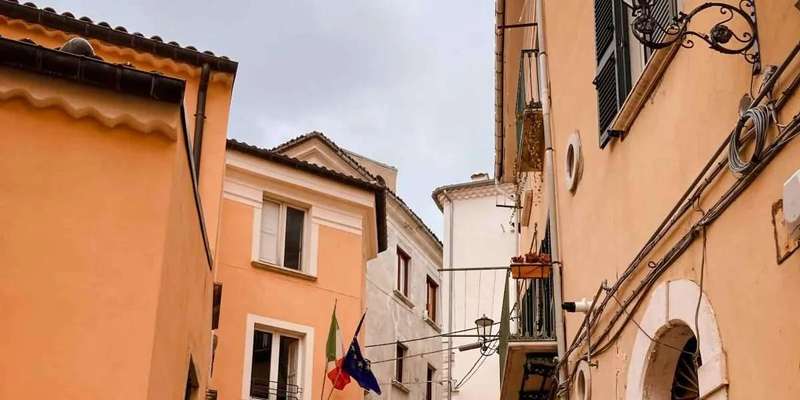- Home
- Useful Tips
- Visiting Campobasso with...
Exploring Campobasso's medieval charm with mobility challenges can feel daunting. Over 30% of travelers with disabilities report abandoning trips due to inaccessible infrastructure, according to EU tourism studies. The hilltop capital of Molise presents unique hurdles – cobblestone alleys, steep gradients, and historic buildings with steps. Yet missing its 12th-century castles, artisan workshops, and panoramic vistas would mean losing the soul of authentic Italy. This guide addresses the real frustrations: uneven paths that fatigue companions, attractions without ramps forcing difficult choices, and the exhaustion of researching accessible routes. We’ve mapped out solutions used by locals who navigate these challenges daily, ensuring you experience Campobasso’s slow-food trattorias and hidden courtyards without compromising comfort or dignity.


Navigating Campobasso's terrain: smart route planning for reduced mobility
The city’s elevation changes demand strategy. Start at the elevator-equipped Piazza Prefettura, connecting to Via Mazzini’s gently sloped shopping lane. For Castle Monforte, take the accessible ASM bus line 4 (equipped with ramps) to the upper entrance near Porta San Antonio, avoiding the 200-step approach. Afternoons work best for Piazza Pepe’s flat cobblestones when morning markets clear. Locals recommend the 2pm passeggiata when streets are less crowded for mobility devices. The municipal tourist office provides free tactile maps highlighting curb cuts, though many alleys near San Bartolomeo Church remain challenging. Save energy by focusing on the lower town’s accessible gems like the Museo Sannitico (fully wheelchair-adapted) before considering uphill attractions.
Accessible attractions: experiencing Campobasso's culture without barriers
Several key sites accommodate limited mobility beautifully. The neoclassical Teatro Savoia offers reserved wheelchair spaces and accessible restrooms – call ahead for performances with audio description. At the 15th-century Santa Maria della Croce, the side entrance ramp is hidden behind the sacristy (ring the bell for assistance). For artisan visits, ceramicist Marco Di Pilla’s workshop near Via Chiarizia has step-free access and seated demonstrations. Surprisingly, the underground Roman cisterns at Palazzo Pistilli are reachable via a platform lift, though the narrow tunnels may not suit all wheelchairs. The municipal gardens provide smooth paths among medicinal plants, with benches every 50 meters. Don’t miss the accessible tasting room at Vineria Molisana, where owners adjusted counter heights for wheelchair users.
Mobility-friendly stays: where to rest comfortably in Campobasso
Choose accommodations near the new town’s elevator hubs for easiest access. Hotel San Giorgio offers three adapted rooms with roll-in showers and emergency call systems, just 100m from the bus terminal. For apartments, Residenza Sveva has a street-level studio with kitchenette and adjustable-height beds. Rural agriturismos like Tenuta Collina provide accessible farm stays 15 minutes from town, with van transfer services. Many smaller B&Bs claim accessibility but have doorway thresholds – always confirm shower seat availability and elevator dimensions if using larger wheelchairs. The city’s new accessibility charter (adopted by 22 properties) guarantees at least one step-free entrance and 80cm doorways, though historic buildings may have exemptions.
Local secrets for stress-free dining and transport
Campobasso’s trattorias often have steps, but Osteria dell’Arco keeps two ground-level tables reserved for mobility-impaired guests (request when booking). At lunch, arrive before 12:30pm to secure these spots. For transport, the ASM bus fleet has 80% wheelchair-accessible vehicles – look for the blue wheelchair icon on schedules. Taxi Consorzio Molise (+39 0874 692020) operates two adapted vans; book 24 hours ahead for airport transfers. Few know about the free ‘Disabili Pass’ from the police headquarters (Via Muricello 8), granting parking privileges in ZTL zones. Evening strolls are easiest along illuminated Via Roma, where bars like Caffè Maio serve traditional mostarda on accessible terraces. Ask for ‘poltrone’ (armchairs) rather than typical low seating.
